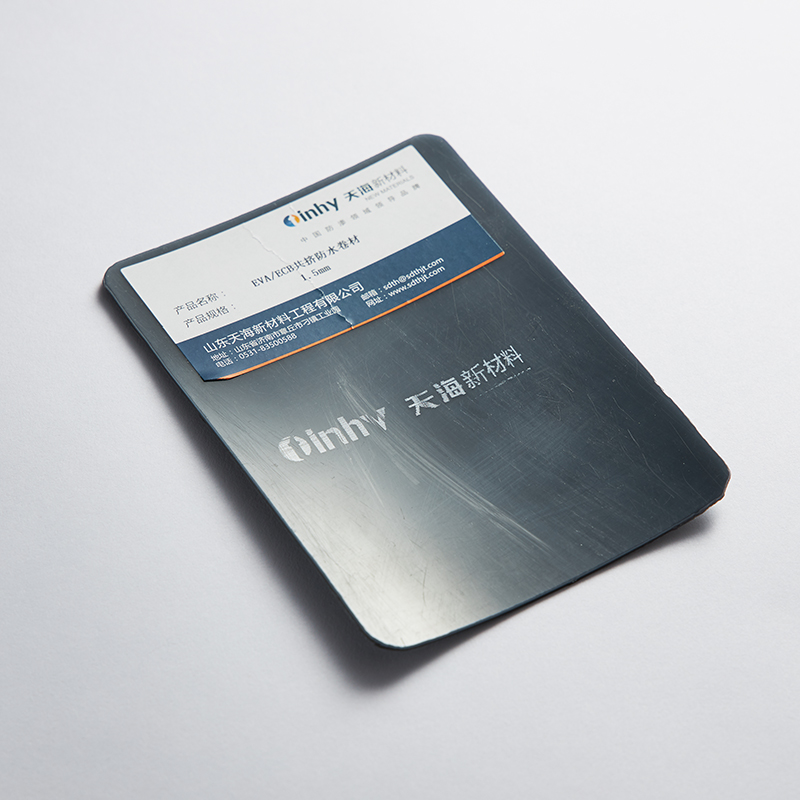The role of geomembrane application in steep slopes
Geomembranes can perform multiple functions in steep slope applications and provide certain technical support and protection. Here are a few common uses of geomembranes in steep slope applications:
Prevent soil erosion: Geomembranes can prevent soil erosion on steep slopes. By laying geomembrane on the surface of steep slopes, it can effectively prevent water erosion, wind erosion and soil movement under gravity, and protect the stability of the slope.
Drainage and grating systems: Geomembranes can be used for drainage and grating systems on steep slopes. By installing a geomembrane on the surface of a steep slope or in its middle layer, drainage channels can be formed to help remove accumulated water on the slope, reduce the impact of water on the soil, and maintain the stability of the slope.
Slope protection: Geomembrane can be used for slope protection on steep slopes. By laying a geomembrane, a protective layer can be formed on the slope surface to prevent soil erosion and damage from rainfall and other external factors. This helps maintain the integrity and long-term stability of steep slopes.
Vegetation support and protection: Geomembranes can be used for vegetation support and protection on steep slopes. By installing a geomembrane on the slope, it can provide a stable foundation for the growth of vegetation and reduce water evaporation and soil erosion. This helps promote vegetation growth and ecological restoration of the slope.

How to install geomembrane on slopes
The installation of geomembrane on slopes needs to follow certain steps and technical specifications to ensure that it can properly perform its anti-penetration and soil protection functions. Here are the general steps for installing a geomembrane on a slope:
Preparation:
Clean the slope surface: First, clean the slope surface to make sure there are no sharp objects, gravel, roots or other obstructions. Any of these objects can damage the geomembrane.
Smooth the slope surface: Make sure the slope surface is flat and has no large potholes or depressions to ensure a smooth installation of the geomembrane.
Choose a geomembrane:
Select the appropriate type of geomembrane: According to the project needs and slope characteristics, select the appropriate type and specification of geomembrane, including anti-penetration geomembrane and slope protection geomembrane.
Check the quality of the geomembrane: Make sure the geomembrane has no obvious damage, cracks or defects.
Laying geomembrane:
Laying the bottom layer of geomembrane: Lay the first layer of geomembrane on the slope surface, making sure that it completely covers the entire slope area. The edges of the geomembrane should extend to the top and bottom of the slope to ensure good containment.
Seam treatment: If multiple pieces of geomembrane are required to be spliced, appropriate seam methods and materials should be used according to the manufacturer’s recommendations to ensure that the seams are tightly sealed.
Fixed geomembrane:
Secure the edge of the geomembrane: The edge of the geomembrane should be fixed to the slope surface to prevent it from being lifted up by wind or water flow.
Add weights or filler: Add weights or filler to the geomembrane to ensure it remains stable during construction.
Slope protection:
Add a slope protection layer: As needed, add a slope protection layer, such as gravel, turf, vegetation, or other appropriate materials, on the geomembrane to protect the geomembrane from UV rays, mechanical wear, and erosion.
Inspection and maintenance:
Regular inspections: During the service life of the slope geomembrane, regularly check the condition of the geomembrane to ensure that there is no damage or leakage.
Timely maintenance: If damage or breakage is found, the geomembrane should be repaired or replaced promptly to ensure its continued effectiveness.
When installing a geomembrane, it is important to follow the manufacturer’s recommendations and relevant technical specifications, and it is best to have it installed by experienced professionals to ensure proper installation and optimal performance of the geomembrane.

Which material should be chosen for geomembrane on slopes?
When selecting a geomembrane material, several factors need to be considered, including the specific application of the slope, environmental conditions and technical requirements. The following are several common geomembrane materials, which can be selected according to actual conditions:
High-density polyethylene (HDPE) geomembrane: HDPE geomembrane is a commonly used geomembrane material. It has good resistance to penetration and chemical corrosion, and can effectively prevent the penetration of moisture and contaminants. HDPE geomembrane is also relatively soft and malleable, making it suitable for gentler slopes and applications that require greater flexibility.
Linear low-density polyethylene (LLDPE) geomembrane: LLDPE geomembrane has high tear strength and impact strength and is suitable for slope applications with high endurance requirements. It has better flexibility and durability at low temperatures and has strong adaptability.
Polypropylene (PP) geomembrane: PP geomembrane has good chemical corrosion resistance, mechanical strength and tear resistance, and is suitable for slope projects that require special chemical environments (such as acid and alkali environments).
Polyvinyl chloride (PVC) geomembrane: PVC geomembrane has high flexibility and durability and is suitable for common slope projects. It has good resistance to UV rays and is suitable for slopes that require long-term exposure to sunlight.
Natural rubber geomembrane: Natural rubber geomembrane has high tensile strength and aging resistance, and is suitable for slope applications that require high durability. It also has good elasticity and crack resistance and can adapt to changes in geological conditions.
Before selecting a geomembrane material, it is recommended to consult with a professional engineer or supplier to evaluate and select based on specific slope applications, design requirements and environmental conditions. At the same time, it is necessary to ensure that the selected geomembrane complies with relevant technical standards and specifications to ensure its performance and reliability.

